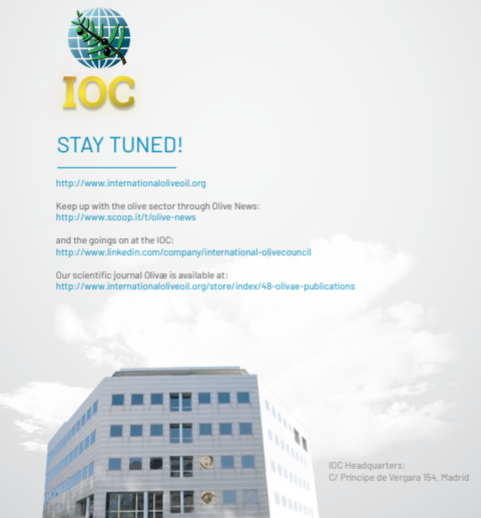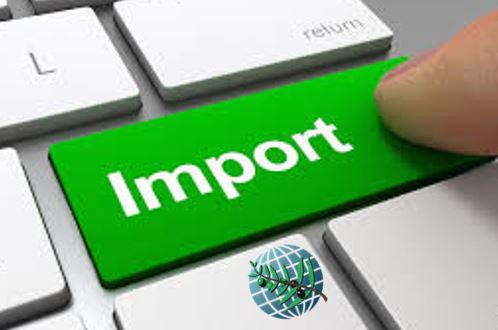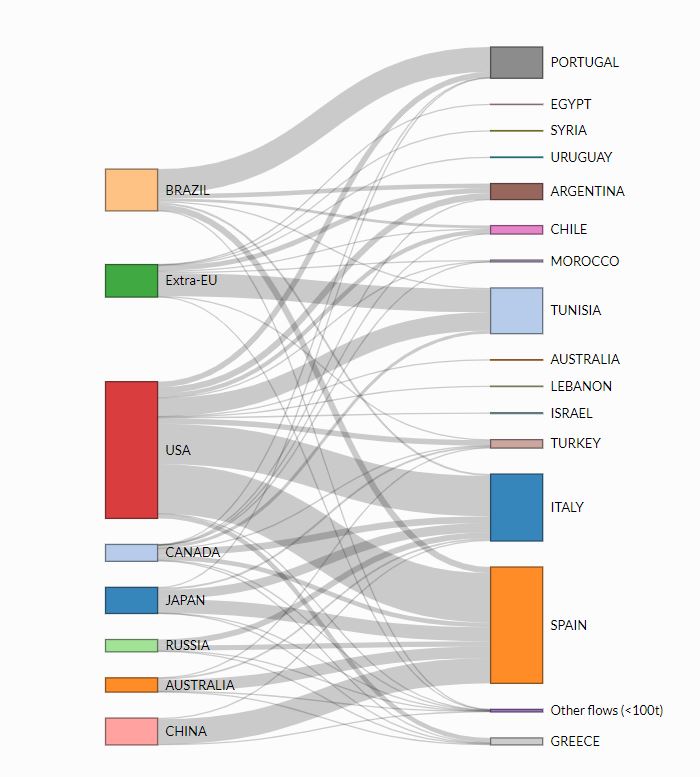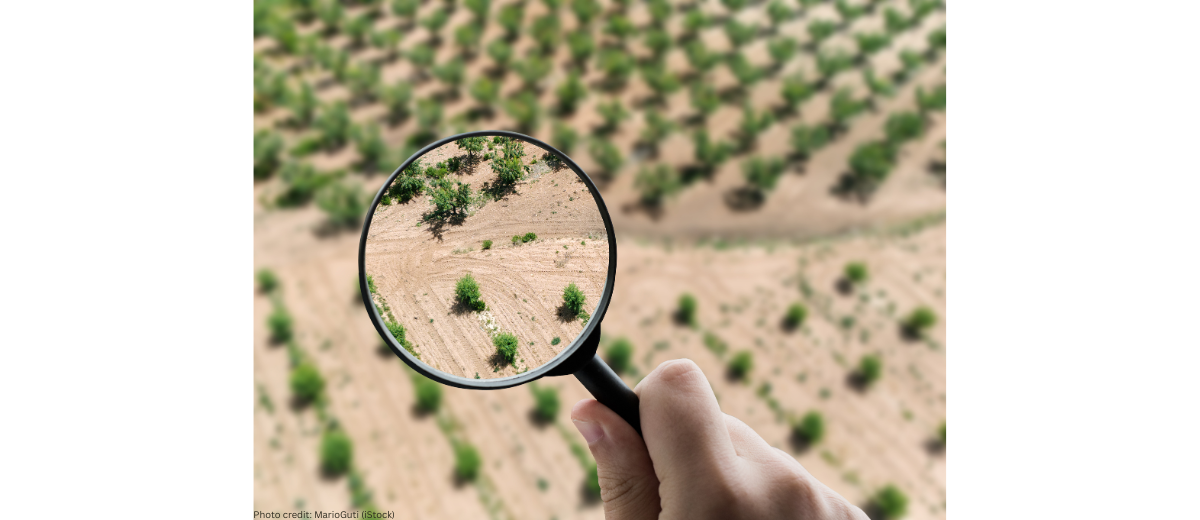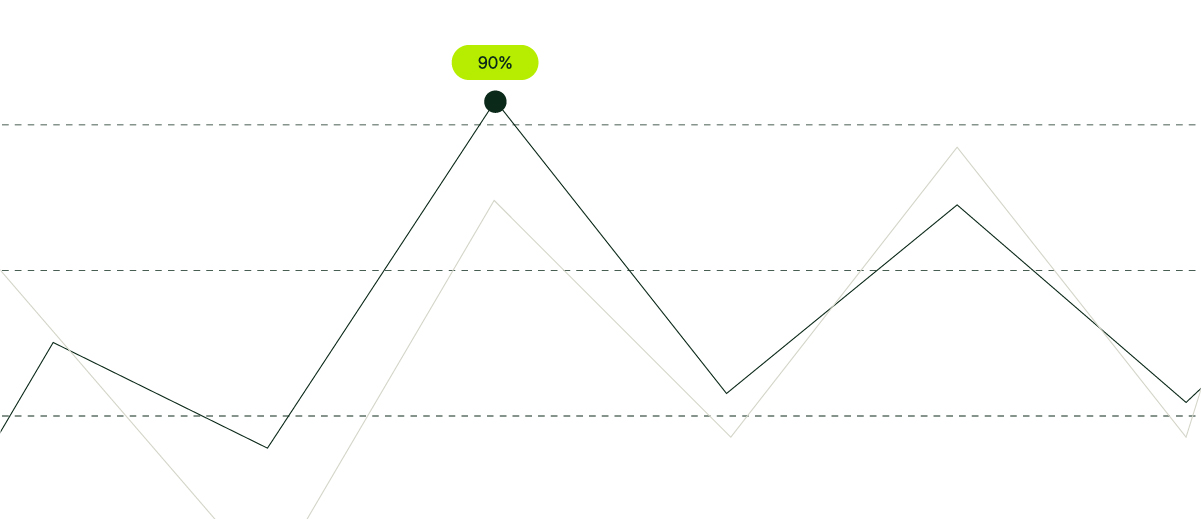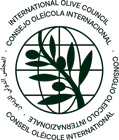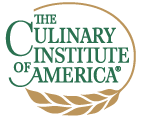In the beginning of the 2021/2022 crop year, imports of olive oil and table olives decreased by 20.9% and 14.2%, respectively. Eight markets represent around 80% of the imports of olive oils and virgin olive oils around the world, the United States with 35%, the European Union with 17%, Brazil with 8%, Japan with 6%, Canada with 5%, China with 4%, Australia with 3%, and Russia with 2%.
In the first months of the 2021/2022 crop year, imports of olive oils and virgin olive oils in the top eight markets reached 180146 tonnes (-20.9%, compared to the same period previous crop year).
The table below shows the trade in the first months of the current crop year (2021/2022). In general, imports fell in the main markets, Australia (-8.5%), Brazil (-27.2%), Canada (-40.4%), China (+7.8%), Japan (+0.6%), Russia (-23.3%), United States (-14.5%) and the extra-EU (-46%), compared to the same period the previous crop year.
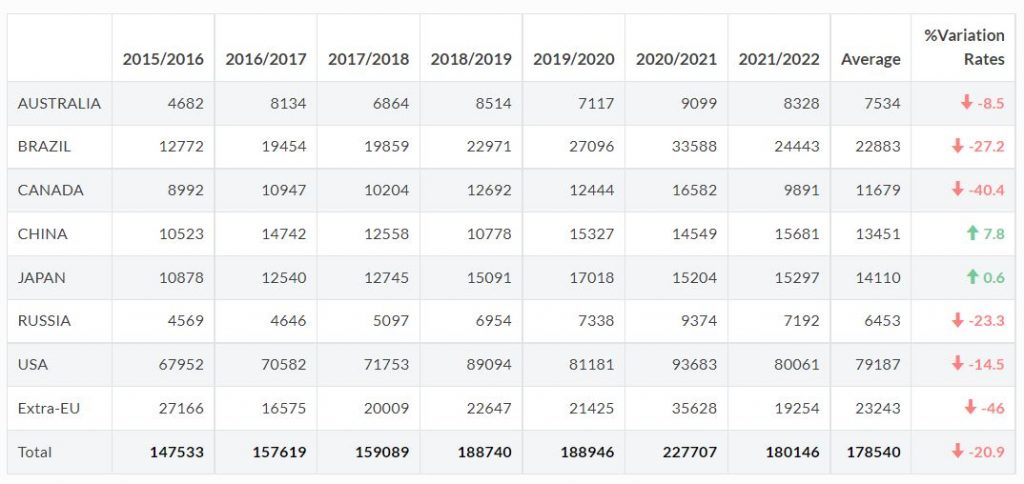 Imports mainly came from Spain with a share of 37.8% of all imports (+5.2%, compared to the same period the previous crop year), followed by Italy with 21.7%, Tunisia with 14.9%, Portugal with 10.2%, Argentina with 5.2%, Turkey with 2.8%, Chile with 2.7%, and Greece with 2.3%.
Imports mainly came from Spain with a share of 37.8% of all imports (+5.2%, compared to the same period the previous crop year), followed by Italy with 21.7%, Tunisia with 14.9%, Portugal with 10.2%, Argentina with 5.2%, Turkey with 2.8%, Chile with 2.7%, and Greece with 2.3%.
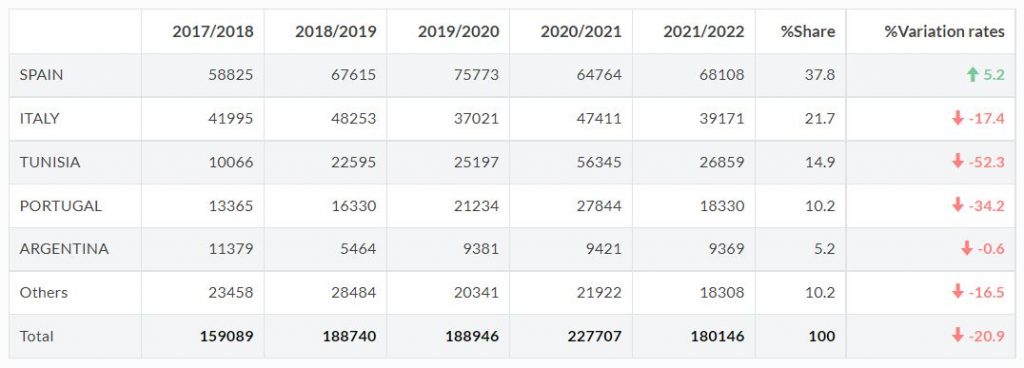
In terms of volumes by product category, 72.4% of total imports were under code 15.09.10 (virgin olive oil), followed by imports under 15.09.90 (olive oil) with 21% and the remaining 6.6% under 15.10.00 (olive pomace oil).
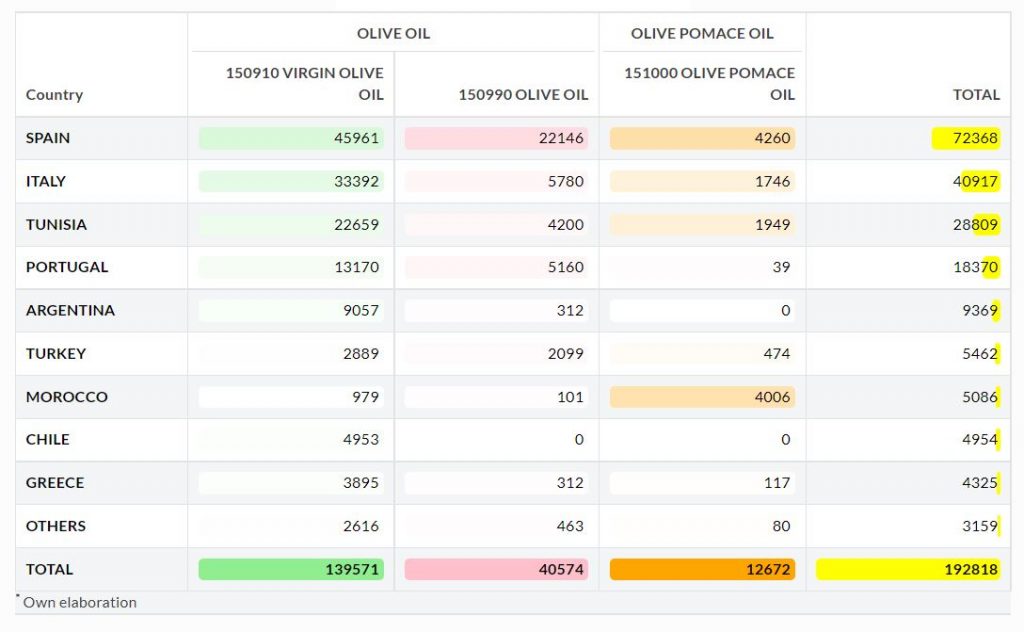
Further information is available on this link: https://www.internationaloliveoil.org/what-we-do/economic-affairs-promotion-unit/#prices
